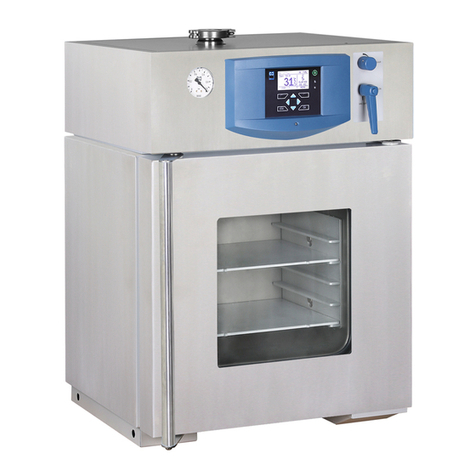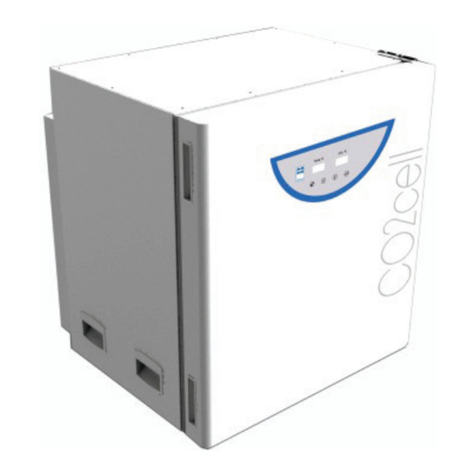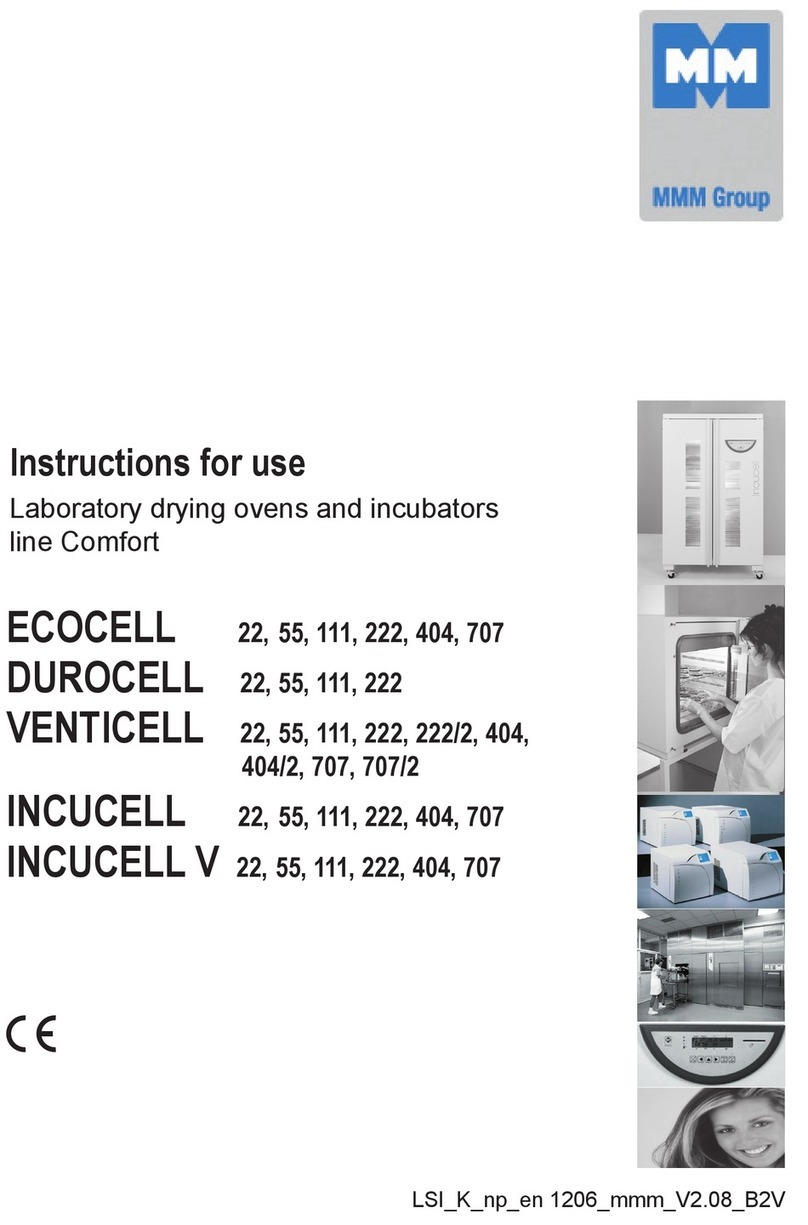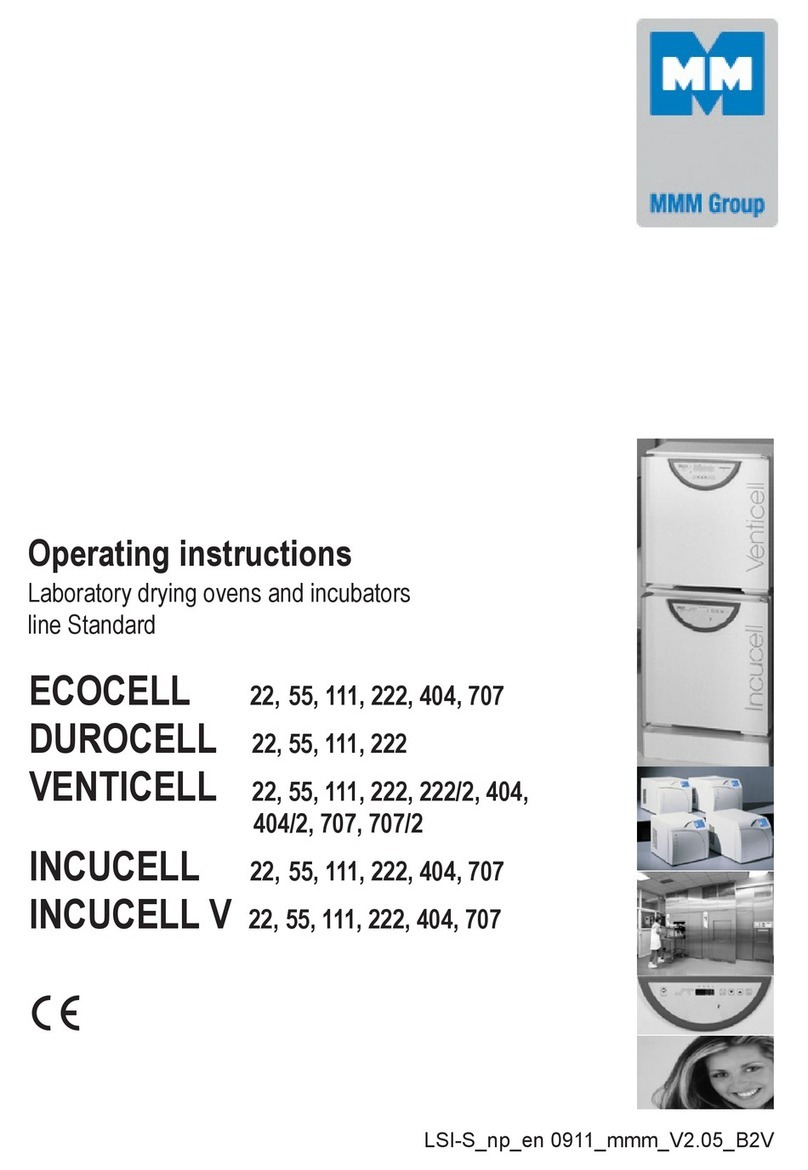With VC and EC types the air exhaust is
protected by a cover at the rear wall of the
unit. This cover is placed inside the unit
while shipping. When installing the unit,
insert the cover into the horizontal openings
bellow and above the exhaust to attach it
behind the exhaust.
DC-type – regarding the fact that it is the
inner chamber only which is resistant to
corrosive effects, the following must be
ensured during the application:
a) Processes specied in the previous
chapter must be performed in the chamber
in closed vessels (corrosive substances
release into the chamber must be prevented);
b) Exhalations from the exhaust outlet must
be exhausted actively to prevent vapour
condensation on the outlet and its dripping
down to the electric part of the device;
c) The whole device must be placed in a
no-corrosive atmosphere (damage of the
source and regulation electronics must be
prevented).
The units are designed for indoor operation
within the ambient temperatures ranges
from 5 °C to 40 °C and at maximum relative
humidity 80 %.
The oven shall be installed in a distance of
min. 100 mm from the rear and sidewalls.
The temperature of the outlet air on the
exhaust may be up to 250 °C (or 300 °C);
this area is labeled by .The walls near
the oven shall be incombustible.
The load-bearing capacity of the oor
during installation of the device shall
correspond to the weight of the unit itself
taking the weight of the maximum charge
into consideration (see chapter
5 - Parameters of the Unit).
The unit must not be placed on a support
that could cause a danger of re or
smothering in case of falling some hot
object out of the unit.
Noinammable,explosiveortoxic
materialsmaybeputintooven!The
same applies to materials that could
release such substances.
Material is only to be put on trays, never
directly on the bottom of the unit!
No articles may be put on he external
surface of the unit.
The unit is not intended for warming up the
liquids.
The units are not intended for use in the
atmosphere with a possible danger of
ammable or explosive anesthetics.
Any assembly or disassembly may be
done only when disconnected from the
mains! After switching the unit off with
thekey(key11,g.4)theunitcomes
onlytoastand-bymode,however,itis
not disconnected from the mains!
● If the unit is not used for a longer time,
disconnect it from mains by pulling the
power cord out of the socket.
The units are supplied with the maximum
permitted temperature set to the maximum.
The power cord must not come in contact
with hot parts of the units – with the
exhaust hole cover.
● Protection of the temperature box, its
surroundings and processed material
against inadmissible temperature excess is
secured by a safety system.
Pull out and subsequently push in the
upper metal plate piece of internal chamber
carefully, there is a danger of cutting
through the rubber gasket of the chamber
through careless manipulation.
The maximum permitted loads: see chapter
5 - Parameters of the Unit.
When operating the cabinets at high
chamber temperatures there can be the
maximum allowed temperature of 70 °C at
their external surface (exhaust ports and
their surroundings and the surroundings
of the chamber sealing, window and door
surface in case of the optional type with
window in door) surpassed and there is a
danger of burns. Please be very careful.
● During the operation of the devices of
404 and 707 at high temperatures a
deformation of the inner door surface
occurs as a consequence of thermal
tension, which makes their closing more
Instructions for use
4 LSI-S_np_en_1309_mmm_V2.10_B2V































